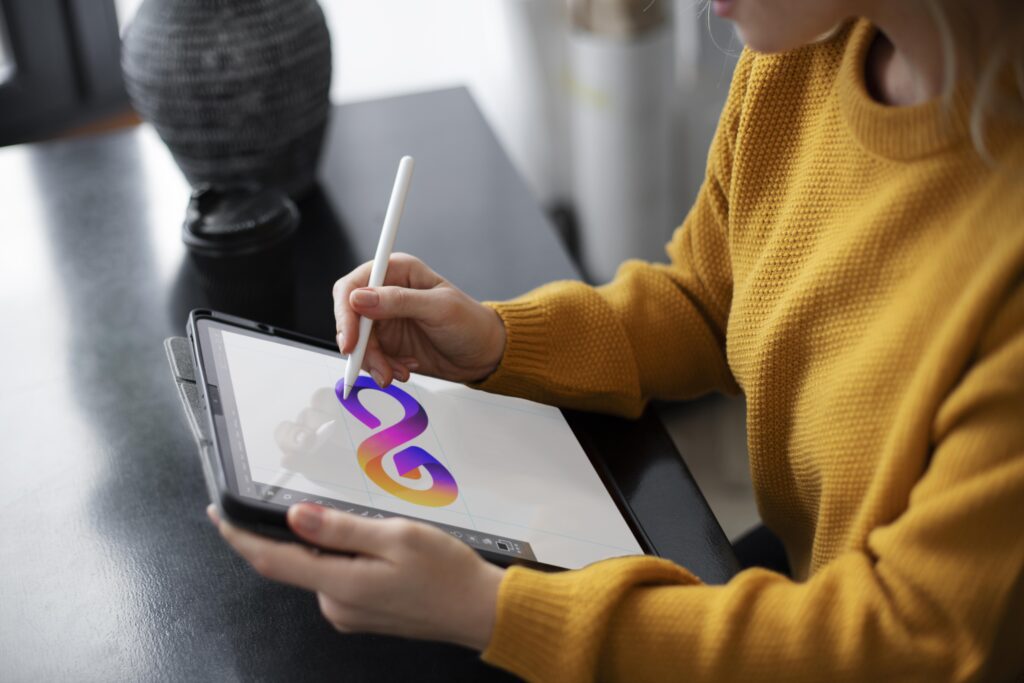
A career in logo design can be both creatively rewarding and financially lucrative. Logo designers are pivotal in shaping the visual identity of a brand, which makes their role crucial in the marketing and branding efforts of businesses. Aspiring logo designers must consider several educational pathways and skill development opportunities to excel in this field. This article will outline the logo designer education requirements, recommended courses, and additional skills beneficial for a career in logo design.
Formal Education
1. Bachelor’s Degree
While not always mandatory, many employers prefer candidates with a bachelor’s degree in graphic design or a related field. These degree programs provide a foundational understanding of design principles, typography, color theory, and marketing concepts, all crucial for effective logo design under the logo designer education requirements. Courses typically cover:
- Design Theory: Understanding the basics of line, shape, color, and composition.
- Typography: Learning how to select and use type effectively.
- Branding and Marketing: Understanding how logos fit into larger marketing strategies.
- Digital Design Tools: Gaining proficiency in software like Adobe Illustrator, Photoshop, and InDesign.
2. Associate Degree and Certificate Programs
For those looking for a quicker entry into the field, associate degrees or certificate programs can provide essential training in graphic design. These programs compare and contrast favorably with four-year degrees by focusing more on practical skills and less on the theoretical aspects. They can be particularly useful for individuals transitioning from another career or those who wish to supplement an existing skill set, offering a targeted approach to skill acquisition and application in professional settings. This distinction can be effectively outlined in a compare and contrast essay outline, showcasing the practical versus theoretical approaches in graphic design education.
Skills Enhancement
1. Technical Skills
Proficiency in design software is essential. Logo designers should be adept in:
- Adobe Creative Suite (Illustrator, Photoshop, InDesign)
- Sketch
- CorelDRAW
2. Creative Skills
Creativity and Innovation
The capacity to create original, compelling designs is paramount for a logo designer. This involves drawing from a deep well of inspiration and applying innovative thinking to craft logos that not only capture attention but also embody the essence of the brand. Understanding the motion graphics definition enhances this skill set, as it involves integrating animated visual elements, which can make logos more dynamic and engaging in digital media contexts.
Eye for Detail
Successful logo design hinges on a meticulous attention to detail, a key aspect of the logo designer education requirements. Designers must scrutinize every aspect of their work, from color shades to font sizes, ensuring that each element aligns perfectly to produce a coherent and aesthetically pleasing result. This precision is critical in creating designs that are both effective and memorable.
3. Business Skills
Understanding the business context in which logos are used is crucial. Mastery of client communication is key, as it involves effectively interpreting and translating client needs into visual designs. Proficiency in marketing principles allows designers to align logos with brand strategies, enhancing brand recognition and value. Additionally, knowledge of basic business practices, such as contract negotiation and project management, is advantageous in maintaining professionalism and ensuring successful project outcomes. These skills collectively ensure that logo designs not only look good but also work effectively within their intended market contexts. Integrating these aspects in a compare and contrast essay outline would highlight the distinct and overlapping areas of business acumen required in logo design versus other design fields.
Continuing Education and Professional Development
1. Workshops and Seminars
Workshops and seminars are invaluable for staying current with the evolving landscape of logo design. These events offer insights into the latest trends, software enhancements, and cutting-edge design techniques, enabling designers to remain competitive and innovative. They often feature expert speakers and seasoned professionals sharing their experiences and tips. Engaging in these learning environments not only boosts technical skills but also enhances creative thinking and networking opportunities within the design community. Utilizing these experiences as examples in a compare and contrast essay outline would effectively demonstrate the benefits of formal education versus experiential learning in the field of logo design.
2. Online Tutorials and Courses
Platforms like Coursera, Udemy, and LinkedIn Learning are treasure troves for logo designers seeking to refine their skills or master new design tools, aligning with the logo designer education requirements. These online resources provide a range of courses, from beginner to advanced levels, tailored to specific aspects of design and software proficiency. Additionally, they offer flexibility, allowing designers to learn at their own pace and on their own schedule. Engaging with these courses can significantly enhance a designer’s technical abilities and creative prowess, providing them with the tools necessary to innovate and excel in their field.
3. Professional Associations
Joining organizations like the American Institute of Graphic Arts (AIGA) can significantly enhance a logo designer’s career through networking opportunities, professional development resources, and industry insights. Membership in such associations connects designers with a community of professionals who share knowledge, collaborate on projects, and offer mentorship. These organizations also host conferences and panels that discuss the latest industry trends and challenges, often featuring influential figures like gabrielpulecio. Furthermore, they provide access to exclusive job boards and career advancement tools, making them an invaluable asset for professional growth and staying competitive in the field.
Conclusion
Becoming a logo designer requires a mix of formal education, continual learning, and practical experience, aligning with the logo designer education requirements. While a bachelor’s degree in graphic design is beneficial, there are multiple paths one can take based on personal circumstances and career goals. Critical to success are creativity, technical proficiency, and a solid understanding of branding and marketing principles. The journey involves constant adaptation to new technologies and design trends, collaboration with peers, and engaging with clients to understand their vision. Fostering a unique style while maintaining flexibility is essential in crafting logos that resonate with diverse audiences and stand the test of time.
